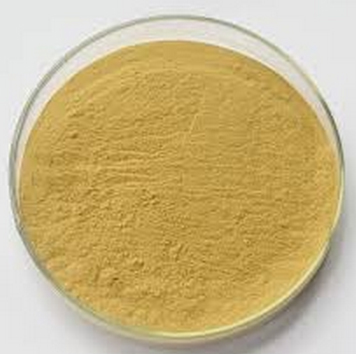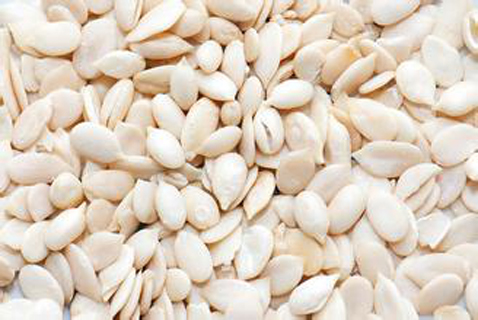Best Price on Pumpkin Seed Extract Factory in Bangkok
Best Price on Pumpkin Seed Extract Factory in Bangkok Detail:
[Latin Name] Cucurbita pepo
[Plant Source]from China
[Specifications] 10:1 20:1
[Appearance] Brown yellow fine powder
Plant Part Used:Seed
[Particle size] 80 Mesh
[Loss on drying] ≤5.0%
[Heavy Metal] ≤10PPM
[Storage] Store in cool & dry area, keep away from the direct light and heat.
[Shelf life] 24 Months
[Package] Packed in paper-drums and two plastic-bags inside.
[Net weight] 25kgs/drum
Introduction
Pumpkin seed is used medicinally to help improve bowel function by ridding the intestinal tract of parasites and worms.
As raw material of drugs for eliminating insecticide, swelling, andpertussis, pumpkin seed extract is widely used in pharmaceutical industry;
As product of treating malnutrition and prostate, pumpkin seed extract is widely used in health industry.
FUNCTION:
1.Pumpkin seed extract can help to prevent the prostate disease.
2.Pumpkin seed extract has the function of treating whooping cough and children with sorethroat.
3.Pumpkin is also a natural source of magnesium, phosphorus, selenium, zinc, vitamin A, and vitamin C.
4.The cushaw extract is also a laxative, which can help to moisture the skin, is indeed a good beauty food for women.
5.Pumpkin seed is used medicinally to help improve bowel function by ridding the intestinal tract of parasites and worms.
6.The cushaw seed extract have much acid , this acid can relax the rest angina, and have a function to low the high blood liquid
Product detail pictures:

Related Product Guide:
To continuously increase the administration process by virtue of the rule of "sincerely, good religion and excellent are the base of company development", we commonly absorb the essence of linked goods internationally, and continually build new solutions to fulfill the requires of shoppers for Best Price on Pumpkin Seed Extract Factory in Bangkok , The product will supply to all over the world, such as: Morocco, Algeria, Wellington, So We also continuously function. we, focuse on high quality, and are conscious of the importance of environmental protection, most of the merchandise are pollution-free, environmentally friendly solutions, reuse on the solution. We've Updated our catalog, which introduces our organization. n detail and covers the primary products we provide at present, You may also visit our web-site, which involves our most recent product line. We look forward to reactivating our company connection.
https://davesmith.ludaxx.com
https://www.davegsmith.com/
https://bluelineproducts.com/
Why it Functions for over the counter appetite suppressant in this area El Paso
When it Functions for
F21 is an All Natural Sugar Blocker that assists restrict your blood sugar absorption. It consists of various substances found to have numerous wellness advantages, such as L-Arabinose, Coriolus Versicolor Polysacchride, Konjac-Mannan, Magnesium Stearate, Mint flavor: Menthol and Natural Colors. F21 not just does it help advertise weight management, (PSK) boosts your immune system feedback. In fact, for every gram of F21, you can obstruct up to 20 grams of sugar (sucrose). The formula not just assists advertise weight management, it rewards the digestion system by enabling the blocked sucrose to support helpful probiotic germs while the polysaccharide (PSK) boosts your immune system feedback.
DG Smith https://www.davegsmith.com/
over the counter appetite suppressant :
00:00:05 loose weight
00:00:11 controlling hunger
00:00:17 over the counter diet pills
00:00:23 controlling hunger
00:00:29 how to control sugar diabetes
Treatment For Vata Pitta Kapha वात पित्त कफ Problems by Yoga Mudra Video in Hindi by Ratan K. Gupta
Ratan K. Gupta is Working as Motivational Speaker & Life Skills Coach, Science I.T. & Career Coach, Public Speaking & Leadership Trainer, Astrologer & Yog Guru, Writer & Director for Films-T.V. & Youtube Videos.
For any detail & Information Visit my Blog & Website & Follow my Social Media Profiles
https://www.RatanKGupta.com
https://www.RatankGupta.blogspot.com
https://www.facebook.com/ratankgupta15
https://www.twitter.com/ratankgupta
https://www.instagram.com/ratankgupta
https://www.linkedin.com/in/ratan-k-gupta-459b0972
https://www.ratankgupta.wordpress.com
https://ratankgupta.tumblr.com
https://plus.google.com/+RatanKGupta
https://www.dailymotion.com/ratan-k-gupta
Please Like & Share Videos & also Subscribe my Channel https://www.youtube.com/rktelefilms
We offer Motivational Seminars, Acting Film-Making Workshops & Films-T.V. Writing Direction. For any Information, Email Your Query & Detail to Email- RatanKGupta15@gmail.com
All the Best to all my Viewers
Ratan K. Gupta
Email – RatanKGupta15@gmail.com
-~-~~-~~~-~~-~-
Please watch: “फिर भी मेरा भारत महान Know 10 Duties of Citizens towards Nation! A Must Watch Video by Ratan K Gupta”
-~-~~-~~~-~~-~-
In general, we are satisfied with all aspects, cheap, high-quality, fast delivery and good procuct style, we will have follow-up cooperation!







